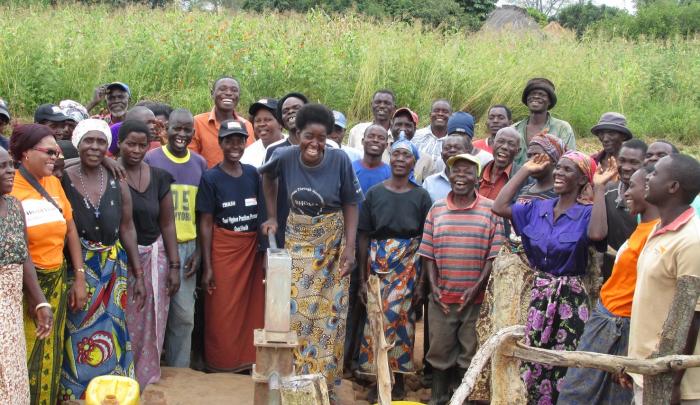
More than 748 million people around the world lack access to clean drinking water, but communities where World Vision operates are increasingly seeing universal access to clean water – which is having a transformative effect for millions.
In 2014, World Vision provided clean drinking water to every man, woman and child in 2,416 villages in Africa.
World Vision already is the largest nongovernmental provider of clean water in the developing world – reaching one new person with clean water every 30 seconds. However, providing universal water access represents a significant shift in its development model.
For decades, World Vision has provided water access and improved sanitation and hygiene fairly across the communities where it works. The new strategy is to intensively invest in a community, achieve universal water access – defined as a permanent source of clean water within a 30-minute walk – prior to moving on and repeating the approach elsewhere.
“Instead of spreading water access evenly throughout communities, we’re focused on getting the job done in village after village and then moving on to new communities,” said Greg Allgood, vice president of water at World Vision. “Our goal is simple – everyone should have access to clean water that lasts.”
Zambia is one of the countries seeing rapid transformation through universal access to clean water. In 2014, 416 Zambian villages reached universal access through construction of 298 new borehole water facilities, 210 water points from mechanized systems and 127 rehabilitated boreholes.
“It’s a new way of thinking and what is needed to help solve the global water crisis within our lifetime,” Allgood said. “The development community is aligning to the fact that universal coverage is possible, and we are committed to doing our part.”
While drilling wells and providing new water points is commendable, it doesn’t make lasting change for the community if the wells break down.
New research shows that World Vision’s model also is sustainable for decades, well after it leaves a community.
A study by the University of North Carolina at Chapel Hill’s (UNC) Water Institute and Water and Sanitation for Africa, a Pan-African humanitarian agency, found that if local water committees collect fees for repairs and train community members to fix the wells, they can remain in use for decades.
The study found that nearly 80 percent of wells drilled in the Afram Plains in Ghana by World Vision – which integrates local water committees, usage fees and repair teams into its model of delivering clean water – were still operational after more than two decades.
About World Vision:
World Vision is a Christian humanitarian organization conducting relief, development, and advocacy activities in its work with children, families, and their communities in nearly 100 countries to help them reach their full potential by tackling the causes of poverty and injustice. World Vision serves all people regardless of religion, race, ethnicity, or gender. For more information, please visit www.WorldVision.org/media-center/ or on Twitter @WorldVisionUSA.
Highlights
- More than 748 million people around the world lack access to clean drinking water
- In 2014, World Vision provided clean drinking water to person in 2,416 villages in Africa.